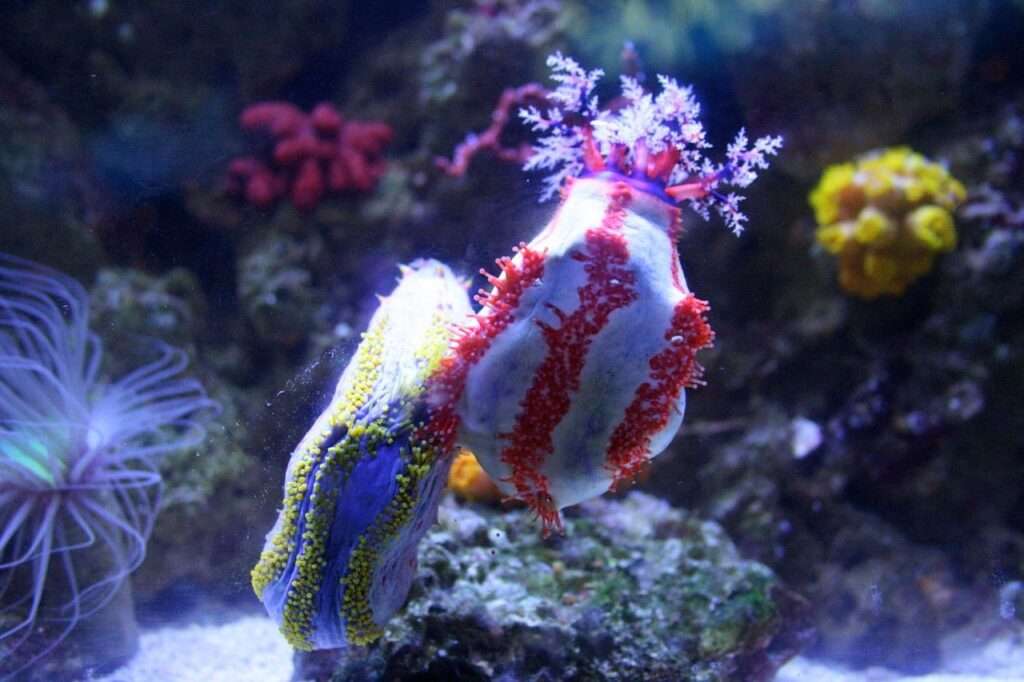
Description
Scientific Name: Pseudocolochirus violaceus
The Sea Apple, or Philippine Sea Apple, has feet that are constantly yellow regardless of the colour of its body and tentacles. The common names Violet Sea Apple and Violet Sea Urchin come from the oral region, which is typically blue to violet.

Habitat
The colorful and rather rounded sea cucumbers of the genus Pseudocolochirus, which are prevalent in Indo-Pacific seas, are known as sea apples.
Behavior
The sea apple can discharge its guts when threatened, just like other sea cucumbers can. In order to deter predators, it can also release a toxin into the nearby water. The “mouth” of sea apples, which are filter feeders, receives plankton through a number of feet.
As Pet/ In Captivity
It prefers an established reef aquarium with plenty of live rock, from which it gets most of its food, and space to roam around. The Sea Apple will typically stay in a favourable site once it finds one, which is typically in an area with strong currents. In order to prevent getting sucked in, protect all intakes on pumps and power heads. It is extremely susceptible to drugs with high copper content. It may shed its oral tentacles in response to abrupt pH or salinity changes.
These cucumbers shouldn’t be kept in aquariums with fish that might nibble on their tentacles. Fish who are inclined to pick at feather dusters typically pick at the tentacles of the Indonesian Sea Apple. Butterflyfish, large angelfish, and any other fish species identified as not safe among invertebrates are among these.
When feeding, it will reach into the stream with its oral tentacles to catch food. It will then drag its entire tentacle into its mouth as the food is contained. It will require daily feedings of dried, liquid, or frozen phytoplankton in the tank.
Table


